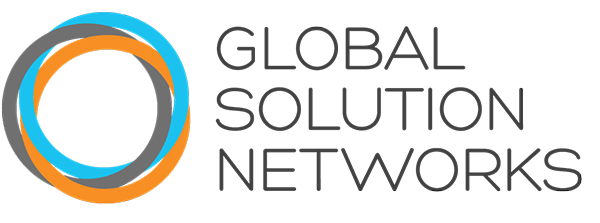A series on deep collaboration strategies for deep decarbonization
in support of UN Sustainable Development Goal #13
THREE
This is the third post in a blog series that aims to:
- examine existing and emerging collaboration initiatives.
- examine new models for collaboration.
- define Deep Collaboration.
- outline a roadmap for how to achieve Deep Collaboration to advance Deep Decarbonization.
There are many initiatives focused on climate change – some of which have been highlighted in this blog series. The question is, are these initiatives collaboratives, and are they designed for and performing at levels that will really help get us on the 2°C transition path—the temperature change considered the most the Earth could tolerate without risking catastrophic changes to food production, sea levels, fishing, wildlife, deserts and water reserves..
As we wait for the Paris Agreement that came out of COP21 to take force, we can expect an upsurge in collaboration activities at all levels. In fact, within the Paris Agreement itself, the Section on Capacity Building (Articles 72-84) contains abundant references to web-based portals, public access to information, tools and best practices, public participation, dialogue, coordination and collaboration.
This is great, but we really need to know how well collaboration activities are working. Are we seeing engagement in the issues with indicators such as number of collaborators, number of documents, number of comments, number of page views, number of blogs, tweets and social media exchanges? Over the last 5 years or so of employing these new web 2.0 collaboration technologies, the results have been mixed.
With the benefit of hindsight, it is clear that most climate change collaboratives were defined relatively narrowly and focused entirely on their own objectives, without much, if any, concern about how well overall collaboration is working across a sector. The first generation/phase of climate change collaboratives was relatively slow, reflecting what could be considered to be usual adoption rates of new technologies. Stakeholders were learning the basics about online collaboration, and most collaborative platforms aimed to provide stakeholders value in terms of:
- saving time finding content and experts in support of project work.
- enhancing visibility and profile of content and experts.
- developing tools to perform analysis and generate new knowledge.
Some early climate change collaboration was done by the Climate Knowledge Brokers (CKB) group. CKB started up in 2011 with a mission to address the important issue of improving the state of climate-related information and knowledge needs. Among the challenges was (and still is) the proliferation of climate portals not connected with each other and often doing duplicative, redundant work. The inefficient use of limited resources meant that there were missed opportunities to meet the expanding needs of stakeholders across the proliferation of climate change issues.
In 2015 CKB published a Manifesto describing their strategy to improve the utility of climate-related information and to achieve their stakeholder’s goals of climate resilience. CKB used collaboration tools, facilitated communities of practice (COP), and deployed collaboration processes/strategies to address issues of stakeholder awareness and trust in the quality and context of climate information, and supported the process of leveraging climate knowledge into climate actions. The CKB approach helps define what are some of the key characteristics of advanced climate knowledge brokering, or what we term as “Deep Collaboration for Deep Decarbonization”.
While in Paris at COP21, I met with Bertand van Ee, CEO at Climate KIC and Ebrahim Mohamed, KIC’s Director of Education at the launch of their new report. Climate KIC’s (Knowledge and Innovation Community) mission is “to bring together, inspire and empower a dynamic community to build a zero carbon economy and climate resilient society.” A knowledge GSN (as defined in our GSN taxonomy of types), KIC is an example of an integrated collaborative system leveraging climate knowledge with synergistic resources (e.g. capacity building) into climate actions.
Deputy CEO Ari Huhtala and KM Strategist Geoff Barnard of the Climate and Development Knowledge Network (CDKN) were also in attendance and we exchanged perspectives on how GSNs can network to support capacity building in developing countries for the INDCs (Intended Nationally Determined Contributions, or the national commitments to address climate change) and also how next generation collaborative tools and approaches can support more transparent and participatory governance frameworks to advance non-state solutions to sustainability issues (A recent study is downloadable here). In this regard, I had the pleasure to co-lead a COP21 side event on Next Generation Standards Systems, which highlighted the need for an integrated system of Climate GSNs (and built on the results of a previous GSN climate roundtable in February 2014) to support new open standards systems for mitigation and adaptation/resiliency leveraging other digital technologies including the Internet of Things and Blockchain.
Climate change platforms from the early days of knowledge hubs that shared reports and connected experts in discussion groups are now evolving into new models for integrated systems that help design and implement climate actions more efficiently and with global scalability. However, successful Deep Collaboration needs sustained multi-stakeholder participation and this requires major behavior change.
Collaboration occurs when stakeholders are motivated to develop common resources through which information and benefits are openly shared. This is in contrast with competitive markets driven by profit motives to develop marketable solutions (e.g. technologies for climate actions). Deep Collaboration combines these dual motives of cooperation and competition into an integrated system catalyzed by this “coopetition” (cooperation + competition), or what I call “cooperative collaboration”.
The upcoming final blog in this 4 part series will offer a roadmap to apply cooperative collaboration models and an array of digital technologies to develop a scalable model of Deep Collaboration for Deep Decarbonization.




